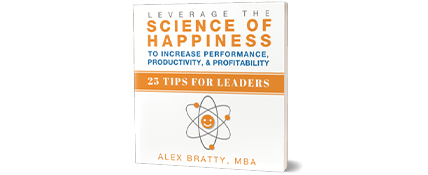We all know that workplace performance is impacted by employee motivation. When motivation is lacking, performance can suffer, and when motivation is high, performance is enhanced. So, the solution to improving performance is to increase motivation, right?
Yes and no.
It depends on the type of motivation and the type of work being performed.
Motivation: There’s extrinsic motivation, which is experienced when an individual engages in an activity because of external factors, such as monetary incentives. Then, there’s intrinsic motivation, which happens when an individual participates in an activity for its sake, finding it inherently interesting.
Type of Work: If employees do work that is systematic or repetitive, extrinsic motivation can positively impact performance. However, when the work involves creative, problem-solving skills, extrinsic motivation can actually diminish performance! Instead, in this case, intrinsic motivation is the key to augmenting performance.
Chances are, most of the work your team does is in the creative, problem-solving category. So, let’s talk about three simple ways you can increase intrinsic motivation, per self-determination theory.
Essentially, self-determination theory states that employees have three basic psychological needs that must be satisfied to increase intrinsic motivation:
- Autonomy: employees have choice and control over their actions. Translated to the workplace, this means providing employees with more control over their job tasks and including them in decision-making. A specific strategy that can be used to increase job autonomy is the ROWE method (Results Only Work Environment). It allows employees to choose where and when they work, so long as their work is accomplished well and on time. Some companies have found that the ROWE method has created a more positive work environment where employees are more committed to the organization. If ROWE isn’t the perfect fit for your organization, think of other ways to create more job autonomy because the research shows that it’s associated with better mental and physical health, and of course, intrinsic motivation.
- Competence: this is confidence, self-efficacy, or mastery—whatever you want to call it, it’s the idea that your team believes they can perform their tasks well. Managers can bolster employee competence by being coaches who provide employees with challenging assignments, remind them of past achievements, and express confidence in their capabilities. A real-life example of this can be seen in the philosophy of the company, Motley Fool. The organization believes in hiring people for life. Consequently, it recognizes that to retain staff on a long-term basis, the work has to be challenging and fulfilling. As such, Motley Fool uses the Agile method of organizing work where employees work on several different projects simultaneously. As projects begin and end regularly, employees are continually learning new skills and developing their mastery. Maybe the Agile method isn’t perfect for your organization, but you can certainly foster a coaching approach among managers.
- Relatedness: employees feel connected to and valued by others, and this need can be met by fostering positive connections and helping employees find purpose in their work. Indeed, when workers understand how their work matters, it becomes more meaningful and relevant, thereby driving greater intrinsic motivation. Additionally, adopting a leadership style that makes employees feel valued and developing quality relationships between leaders and employees is crucial in cultivating a sense of relatedness.
So, next time you’re wondering how to motivate your team, first consider the work they do and then select the appropriate motivational strategy. If more intrinsic motivation is called for, focus on meeting the three basic needs of autonomy, competence, and relatedness, and watch the positive shift in behavior.
If you want more ideas for how you can cultivate motivation and engagement, just download my book for free: 25 Tips for Leaders: How to Leverage the Science of Happiness to Increase Performance, Productivity, and Profitability. And check out my podcast, The Positive Leadership Movement.
References
Gagné, M., & Deci, E. L. (2005). Self-determination theory and work motivation. Journal of Organizational Behavior, 26(4), 331–362. doi:10.1002/job.322
Goyette, K. (2016). Stop trying to motivate your employees [Video file]. Retrieved from https://www.youtube.com/watch?v=7lhVUedc1a4
Latham, G. P. (2012). Work motivation: History, theory, research, and practice (2nd ed.). Thousand Oaks, CA: Sage Publications.
Lauritsen, J. (2018). Unlocking high performance: How to use performance management to engage and empower employees to reach their full potential. New York, NY: Kogan Page.
Lunenburg, F. C. (2011). Self-efficacy in the workplace: Implications for motivation and performance. International Journal of Management, Business, and Administration, 14(1), 1-6. Retrieved from http://nationalforum.com/Electronic%20Journal%20Volumes/Lunenburg,%20Fred%20C.%20Self-Efficacy%20in%20the%20Workplace%20IJMBA%20V14%20N1%202011.pdf
Nielsen, K., Nielsen, M. B., Ogbonnaya, C., Känsälä, M., Saari, E., & Isaksson, K. (2017). Workplace resources to improve both employee well-being and performance: A systematic review and meta-analysis. Work & Stress, 31(2), 101–120. doi:10.1080/02678373.2017.1304463
Ogbonnaya, C., Daniels, K., Connolly, S., & van Veldhoven, M. (2017). Integrated and isolated impact of high-performance work practices on employee health and well-being: A comparative study. Journal of Occupational Health Psychology, 22(1), 98–114. doi:10.1037/ocp0000027
Olafsen, A. H., Halvari, H., Forest, J., & Deci, E. L. (2015). Show them the money? The role of pay, managerial need support, and justice in a self-determination theory model of intrinsic work motivation. Scandinavian Journal of Psychology, 56(4), 447–457. doi:10.1111/sjop.12211
Pink, D. (2009). The puzzle of motivation [Video file]. Retrieved from https://www.ted.com/talks/dan_pink_the_puzzle_of_motivation
Ryan, R. M., & Deci, E. L. (2000). Self-determination theory and the facilitation of intrinsic motivation, social development, and well-being. American Psychologist, 55(1), 68–78. doi: 10.1037110003-066X.55.1.68
Shahzadi, I., Javed, A., Pirzada, S. S., Nasreen, S., & Khanam, F. (2014). Impact of employee motivation on employee performance. European Journal of Business and Management, 6(23), 159-166. Retrieved from http://citeseerx.ist.psu.edu/viewdoc/download?doi=10.1.1.684.9465&rep=rep1&type=pdf
Thomas, K. W. (2009). Intrinsic motivation at work: What really drives employee engagement. Oakland, CA: Berrett-Koehler Publishers.






0 Comments